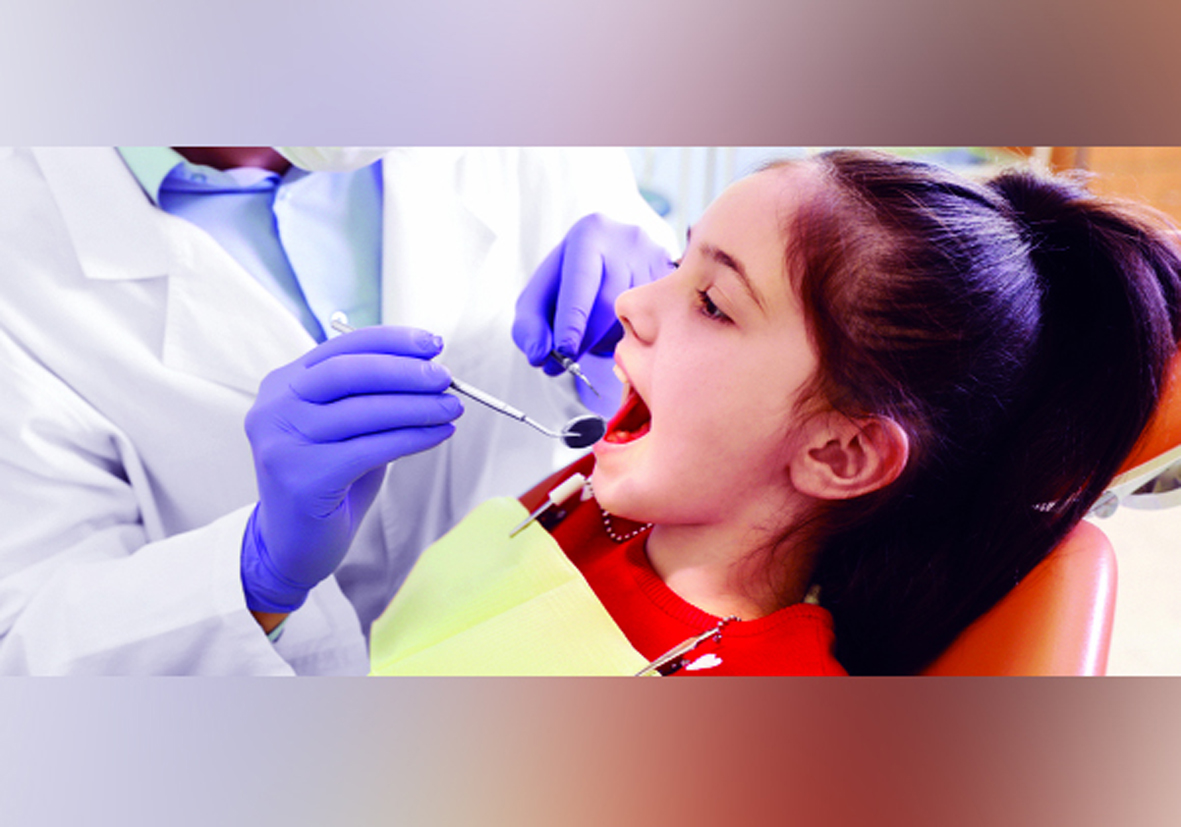Dr Bhavana Kaul
Oral health is gateway to general health. Caring for your child’s oral health is equally as important as his general health. It will establish confidence in him and plays a his major role in nutrition and his overall well-being.
Early loss of milk teeth can cause difficulty in speech and their chewing abilities. Deciduous teeth are often neglected in society because of their shorter existence time in oral cavity. Some children lose their primary (milk or baby) teeth too soon. A prematurely empty space in the mouth can cause your child’s permanent tooth to come in crookedly. Hence, they are equally important as they guide the permanent tooth to erupt in their right place and hence aid in its proper alignment.
When a deciduous or commonly called as milk tooth is lost at an early age (i.e., before a year of eruption of permanent tooth), when this happens, your pediatric dentist may advise a space maintainer to ‘save’ the space for permanent tooth and prevent future crowding. This is to prevent the drifting of other tooth into the space allotted for permanent teeth to erupt. This procedure is called as space maintenance.
A common space maintainer is composed of a stainless steel band that fits around a neighbouring tooth and a stainless steel wire loop that spans the empty space and rests against the opposite neighbouring tooth.
Just because a child’s milk teeth are bound to fall out eventually on their own, doesn’t mean parents can be less attentive to carrying out early oral health habits. Remember, some milk teeth are not replaced until a child is 12 or 14 years old.
IMPORTANCE OF MILK TEETH
* Save and guard the area where the permanent tooth will erupt
* Guide the permanent tooth into position
* Help your child chew and speak
* Encourage normal jawbone and facial muscle development
HOW CAN A SPACE MAINTAINER HELP?
* A space maintainer will hold open the empty space left by a lost or removed tooth.
* It’s made to keep the remaining teeth steady, preventing movement (drifting or tipping) until the permanent tooth takes its natural position in the jaw.
* To maintain the arch length, width and circumferential area.
* Prevents supra eruption of opposing tooth.
* Improves speech abilities if the anterior tooth is lost.
* Improved esthetics if the tooth involved is anterior.
* Also aids in management of oral habits like thumb sucking etc.
STEPS FOR CARE OF SPACE MAINTAINER
* Make sure your child avoids hard foods, sticky sweets or chewing gum. These can loosen the band or get caught in the wires.
* Don’t tug or push or try to bend the wire of the space maintainer with your fingers or tongue.
* Teeth should be brushed after each meal and clean the teeth with bands especially well.
* Continue regular visits to your dentists.
SOME COMMON CAUSES OF FALLING OF MILK TEETH
* Early childhood caries due to prolonged bottle feeding.
* Extractions of grossly decayed milk teeth.
* Poor oral hygiene
* Trauma to milk teeth
* Child Neglect and Abuse
* Intake of soft, sweet and sticky food
TYPES OF SPACE MAINTAINERS
Depending on various factors space maintainers are broadly of two types.
* Removable space maintainers.
* Fixed space maintainers.
However, sometimes the child may have missing teeth due to congenital diseases which may need a partial denture instead of space maintainers. It is important to take a pediatric dentist’s opinion regarding this option.
HOW TO WEAR A SPACE MAINTAINER
If it is a removable space maintainer, it requires some patience from the parents as it will take some time for the child to get accustomed to the appliance. Maintenance of the appliance plays a major role in preventing further infections. The child is advised to maintain his oral hygiene by regular brushing and flossing if required.
If it is a fixed space maintainer, the child is advised not to eat sticky foods, especially toffees and chewing gums as it may get stuck in between the appliance or the appliance may come off with the eatable and in general, the patient is advised not to put finger or tongue and try to tug the appliance as it leads to loosening of the appliance.
Constant monitoring is required from every 3 months to 6 months till the permanent tooth gets erupted.
WHEN TO PLACE A SPACE MAINTAINER
Ideally, the space maintainer should be placed as soon as possible followed by an extraction. But, if the extraction is already done, it is preferable to fix a space maintainer within six months of extraction.
REMOVAL OF SPACE MAINTAINER
It can be removed when the permanent successor starts penetrating the gum tissues or if the patient has any postoperative symptoms.
ADVANTAGES OF SPACE MAINTENANCE:
It will prevent the misalignment problem. In the future which may hampers the physical and emotional well-being of the child.
It is more economical than other orthodontic procedures.
DO’S AND DON’T’S:
Oral hygiene maintenance: The child is advised to brush twice a day regularly and especially, floss the tooth which plays an abutment role at least once a day.
Regular visits: The child must be monitored regularly by the consultant dentist i.e., once on every 3 months.
Avoid sticky and crunchy foods: Sticky and crunchy foods are to be avoided to prevent food accumulation and loosening of appliance.
What happens if space maintainers are not used?
Psychological impact of not talking or laughing due to no teeth.
Drifting and tipping of the teeth.
Midline shifts of the smile.
Altered arch length causing narrow jaws.
Crowding of opposing teeth.
Impacted permanent tooth.
Complex orthodontic procedures which may include extraction of some permanent teeth.
Would prevent the cumbersome procedure to regain the lost space.
Hence, to prevent future complications and to let the child smile and talk with confidence, it’s better to timely act wisely and get the best treatment possible for the children.
The sooner the better.


